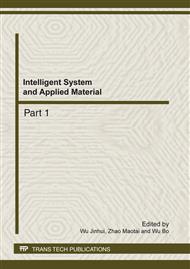p.1176
p.1181
p.1186
p.1191
p.1197
p.1202
p.1207
p.1212
p.1217
Research of Bridge Crack Detecting System Based on Machine Vision
Abstract:
Aiming at the difficulty in crack detecting for bridges, a wireless crack detecting system based on machine vision and RC model helicopter was designed and realized. This system used a wireless camera to capture the surface images of bridges from the direction of below, then images were transmitted to the host computer by 2.4 GHz wireless communication. Edge image of crack can be gained after the image processing program carried out smoothing filtering, adaptive binary and edge extraction for original images of bridge. Image processing program adopted Hough transform to extract the characteristic parameters of bridge crack in edge images including length, width, shape and location of crack. The result of accuracy verification test shows that the relative error of this system was in the range of ±5% and it satisfied the requirements of early crack detecting for bridges.
Info:
Periodical:
Pages:
1197-1201
Citation:
Online since:
February 2012
Authors:
Price:
Сopyright:
© 2012 Trans Tech Publications Ltd. All Rights Reserved
Share:
Citation:


